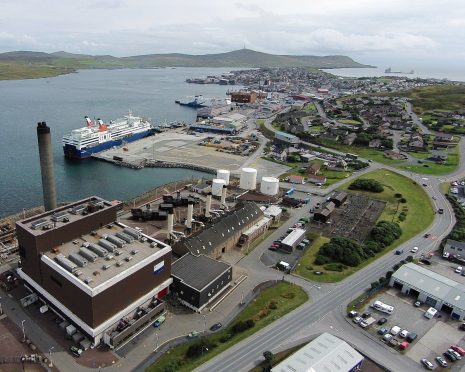Shetland will be connected to the National Grid for the first time in five years – but at the expense of island jobs at the existing power station.
Scottish and Southern Electricity Networks (SSEN) yesterday confirmed that a 60MW subsea cable will be run between Caithness and the islands to replace the ageing Lerwick power station.
The project puts Shetland in line with the mainland and was announced by operators as a “new energy solution”.
But the project was condemned by local politicians with Shetland Liberal Democrat MSP Tavish Scott branding it a “disastrous policy” that would cost 25 power station jobs.
His party colleague, Orkney and Shetland MP Alistair Carmichael, last night urged Ofgem chiefs to visit Shetland to “explain their decision”.
SSEN insisted that by the time the cable is operational most staff will have been offered redeployment.
The proposed 162-mile link will run from Dounreay to Scalloway and then continue underground to Gremista. A public consultation will be held in the summer.
A joint venture between National Grid Interconnector Holdings and Aggreko has been named as preferred bidder to provide “a new energy solution for Shetland”.
If approved by industry regulator Ofgem, Shetland’s future energy demand could be largely provided by renewable energy.
After a three-year construction period, the cable should be operational by the end of 2020 – at which stage Lerwick power station would close.
It has no bearing on separate, continuing discussions about the commissioning of a 600MW interconnector to export renewable energy from Shetland.
Bids to find the most cost-effective power supply solution for the isles were sought in Spring last year after Ofgem rejected plans to build a £200million power station in Lerwick.
SSEN’s Dale Cargill said an “important milestone” in securing the future of Shetland’s electricity supply had been reached.
Mr Scott said: “Ofgem don’t care about local jobs, people or an island community – only money.”
A spokesman for Ofgem said: “Lerwick power station, built in 1953, is set to close as it reaches the end of its operating life.
“We told SSE, which operates the network on Shetland, to tender for the most efficient solution which protects customer interests and ensures Shetland’s security of supply once the power station closes.
“They’ve recommended a subsea cable link to the GB network alongside on-island backup generation. The cable also provides export potential for renewables on Shetland.”
